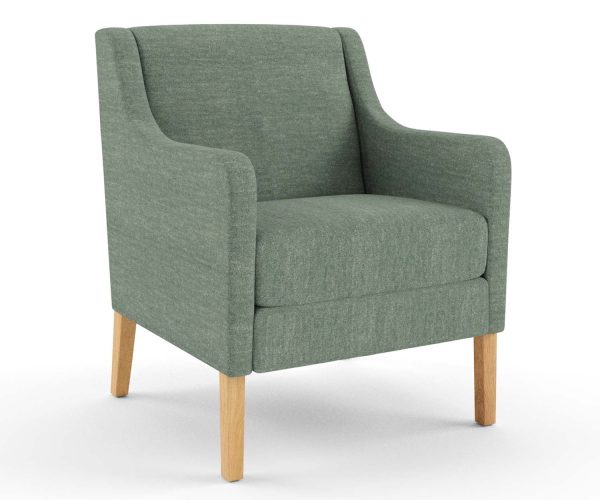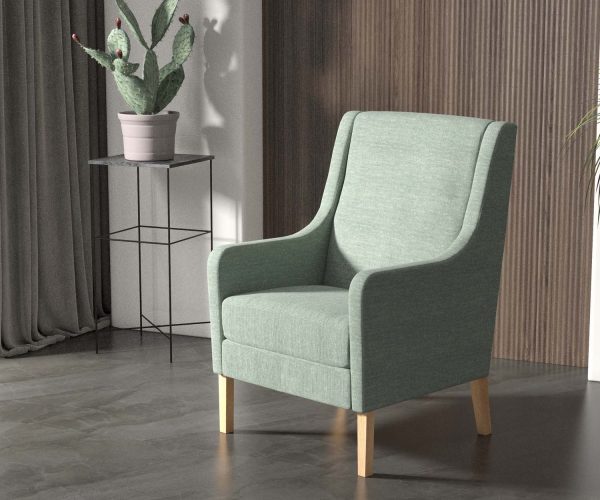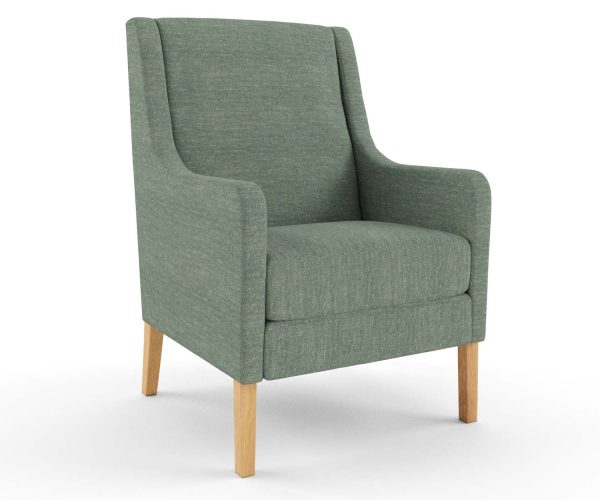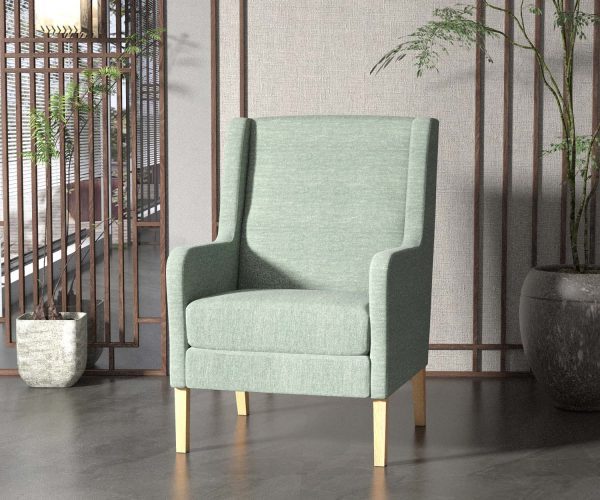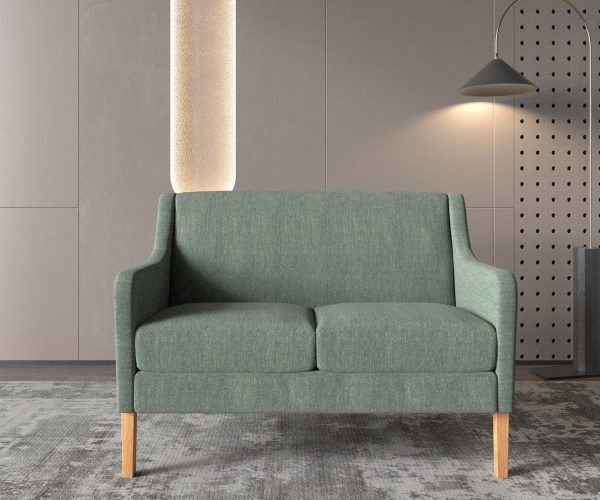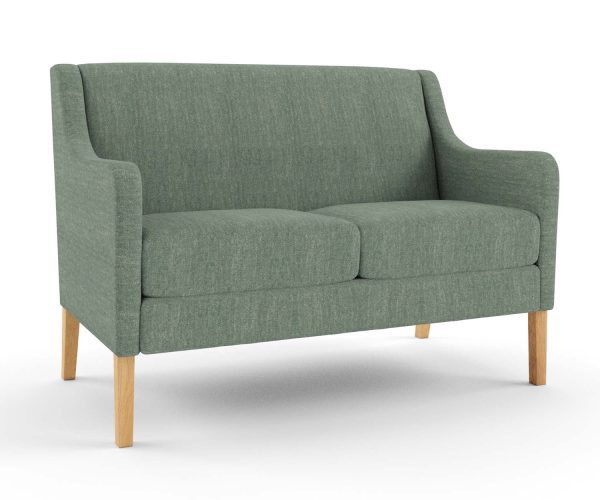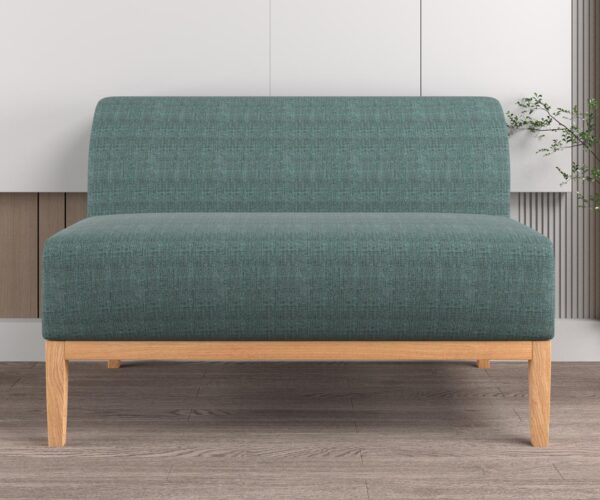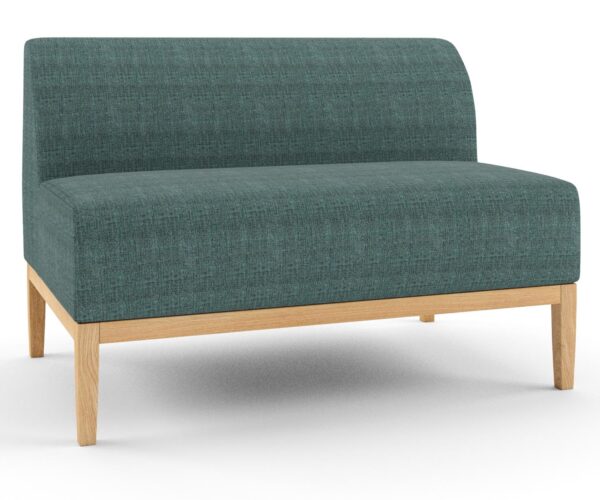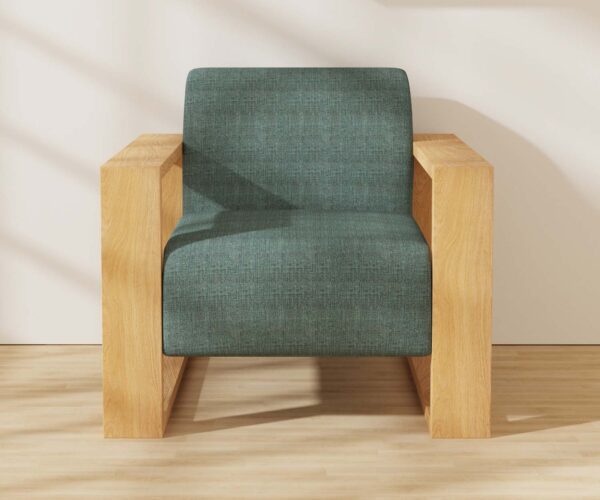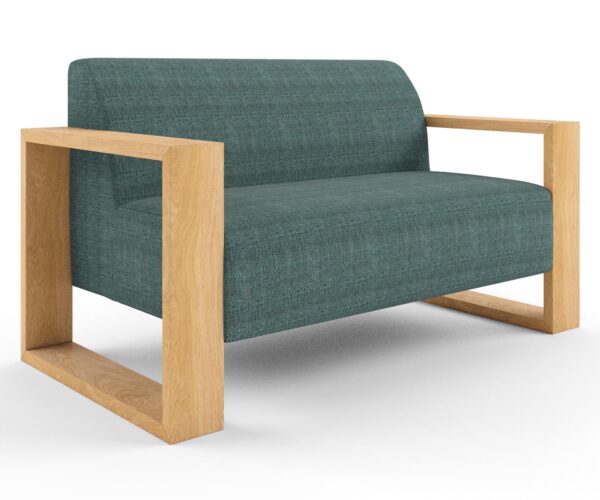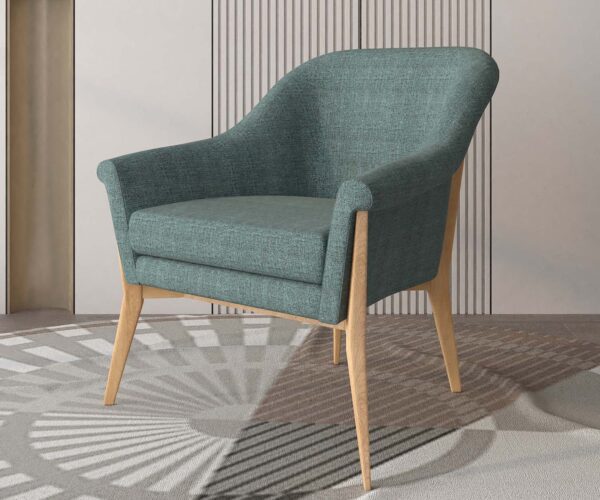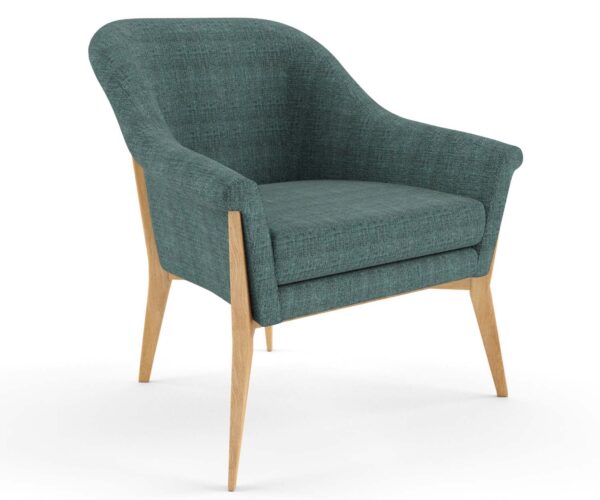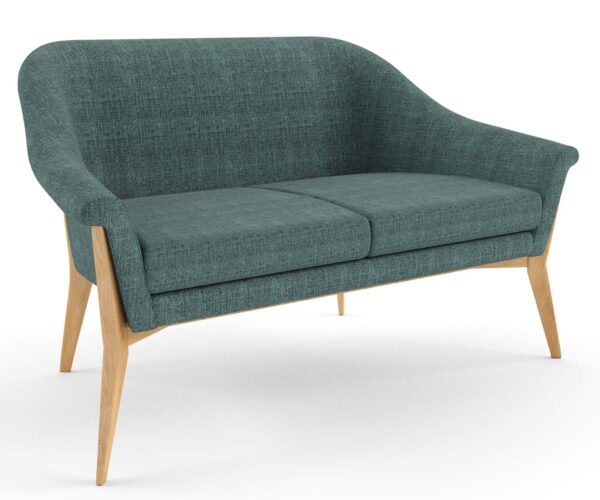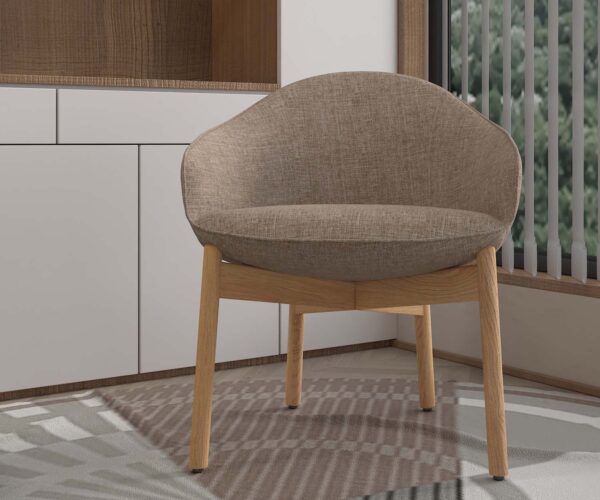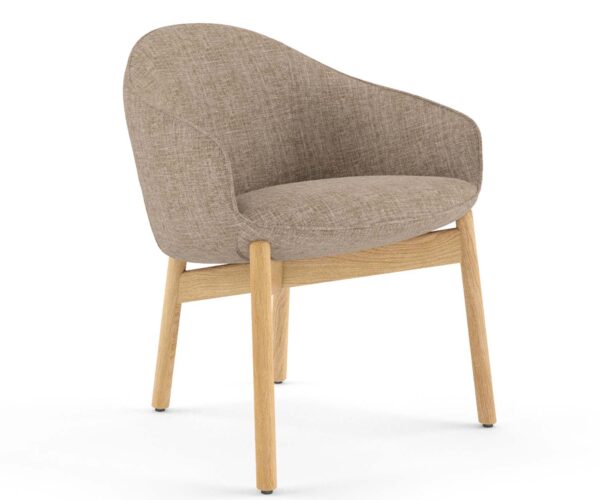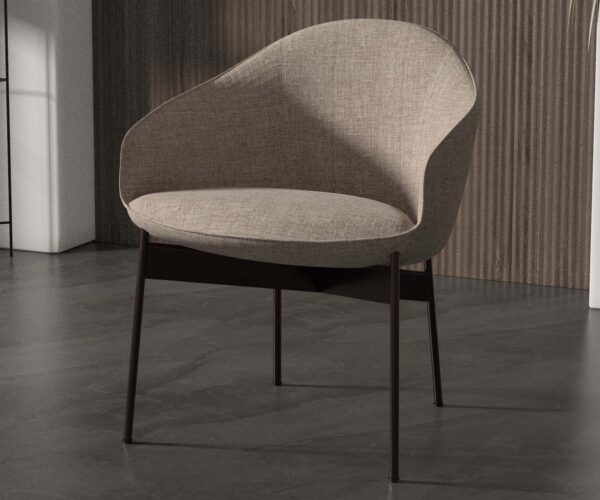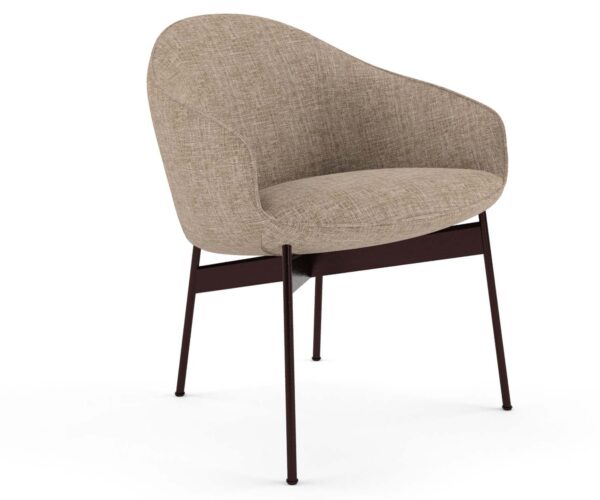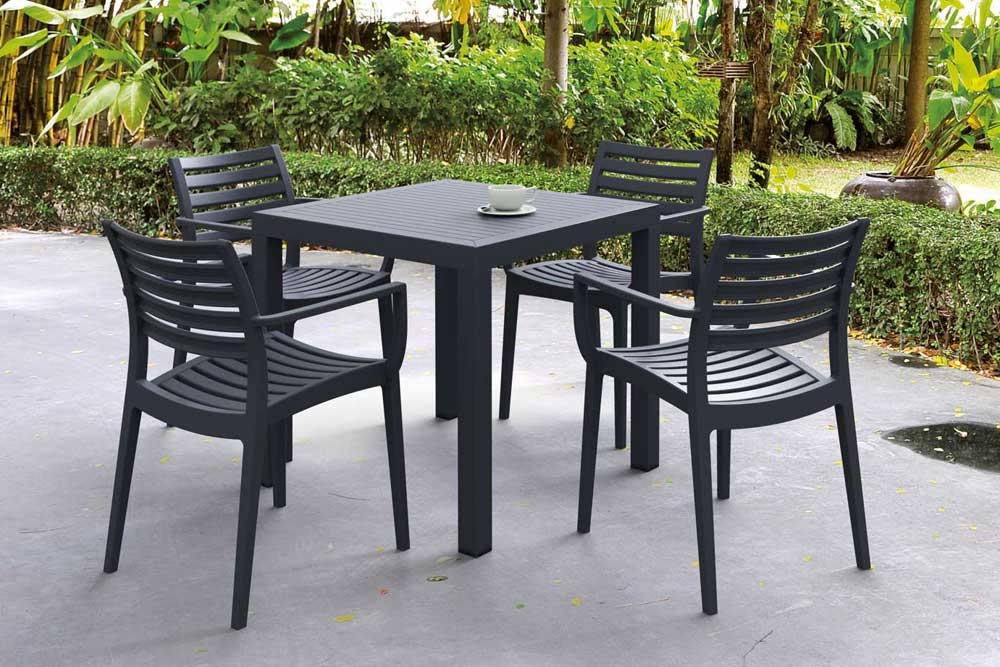7 Practical Strategies to Reduce the Emotional Impact of Moving to Aged Care

The transition into aged care is a significant life event that can have profound emotional implications for residents. Moving from a familiar home environment to a new aged care setting can evoke feelings of anxiety, loss, and disorientation. Creating a home-like environment is key to mitigating these emotional impacts and supporting aged care mental health.
This article outlines seven practical strategies to create a comforting and supportive environment for residents making this important transition.
1. Personalise Living Spaces
Encourage Personal Touches
One of the most effective ways to make a new environment feel like home is by personalising living spaces. Allow residents to bring personal items such as family photos, artwork, and treasured belongings. This not only provides a sense of continuity but also helps maintain a connection to their previous home. Personalisation can significantly reduce feelings of displacement and anxiety.
Flexible Room Design
Offering flexibility in room design can also enhance the homeliness of the space. Provide options for different colour schemes, furniture arrangements, and decor styles. By involving residents in the decision-making process, you can create a living space that reflects their individual preferences and needs, thereby improving their comfort and emotional well-being.
Personalised Storage Options
Offer residents customisable storage solutions such as wardrobes, shelving units, and drawer organisers that can be adjusted to their specific needs. This allows them to keep their belongings organised and easily accessible, helping them feel more in control and settled in their new environment. Providing options for residents to arrange their storage as they prefer can also add a personal touch to their living space.
Familiar Scents
Allow residents to bring in items that evoke comforting scents, such as scented candles, essential oils, or potpourri. Scents can have a powerful impact on emotional well-being and can help recreate a sense of familiarity. For example, a resident who enjoyed baking might appreciate the scent of vanilla or cinnamon in their room, which can evoke positive memories and enhance comfort.
Personalised Music
Create a playlist of the resident’s favourite music or sounds that can be played in their room. This could include a selection of songs from their youth, nature sounds, or even recordings of familiar voices. Music has been shown to have therapeutic effects, and having access to familiar or soothing sounds can help residents feel more relaxed and at home.
2. Invest in Comfortable Furnishings
Choose Homely Furniture
Select fit-for-purpose aged care furniture that combines comfort with a domestic feel. Opt for items that mimic those found in a typical home, such as soft armchairs, inviting sofas, electric lift recliners and coffee tables. Avoid institutional designs that can make the environment feel clinical and impersonal. Comfortable furniture helps create a relaxed and welcoming atmosphere.
Include Soft Textures
Incorporate soft furnishings like cushions, throws, and rugs to add warmth and texture to the environment. These elements not only enhance comfort but also make the space feel more like home. Soft textures can have a calming effect and help residents feel more at ease.
Prioritise Ergonomic Comfort
When selecting furniture, prioritise ergonomics to ensure that it supports the physical comfort and well-being of residents. Look for ergonomic chairs and sofas that offer proper lumbar support and cushioning. Adjustable features such as reclining options or height adjustments can also enhance comfort and accommodate varying needs. Furniture that provides optimal support helps prevent discomfort and encourages better posture, contributing to a more relaxing living environment.
Select Quality Materials
Invest in high-quality materials that are durable and easy to maintain while also providing a comfortable experience. Seek high performance upholstery fabrics that are antimicrobial and waterproof. Choose options that are also soft to the touch and breathable. For added luxury and comfort, consider plush leathers or fabrics with a similar plush feel. Opt for materials that are easy to clean and resistant to wear and tear, ensuring that furniture remains inviting and functional over time.
Choose Calming Colours
Select soft furnishings in calming colours that promote relaxation and well-being. Colours such as soft blues, greens, and neutrals can create a serene environment that reduces stress and anxiety. Avoid overly bright or harsh colours that may be visually stimulating or overwhelming. The right colour palette can significantly impact the mood and overall atmosphere of the living space.
3. Design Social Spaces
Create Inviting Communal Areas
Design communal spaces that encourage social interaction and engagement. Comfortable lounges, activity rooms, and dining areas should be designed to promote socialisation. Provide ample seating arrangements and spaces for group activities. Social environments can help reduce feelings of isolation and foster a sense of community.
Plan Engaging Activities
Offer a variety of activities that cater to the interests and hobbies of residents. Engaging in familiar and enjoyable activities can help residents maintain a sense of identity and purpose. Activities such as art classes, gardening, or music sessions not only provide entertainment but also contribute to emotional well-being.
Flexible Activity Rooms
Create activity rooms that are adaptable to various types of events and group activities. Include modular furniture that can be rearranged as needed to accommodate different activities, from exercise classes to movie nights. Ensure that the space is equipped with necessary supplies, such as arts and crafts materials or musical instruments, to support diverse activities. The flexibility of these rooms allows for a dynamic schedule of events and can enhance resident engagement.
Outdoor Social Spaces
Integrate outdoor spaces that provide a refreshing environment for residents to socialise and engage with nature. Design gardens, patios, or courtyards with comfortable seating, shaded areas, and accessible pathways. Outdoor spaces should include features such as benches, tables, and pathways that encourage movement and interaction. Gardening areas or raised planters can also offer opportunities for residents to participate in gardening activities and connect with nature.
Memory and Skill-Based Activities
Incorporate activities that stimulate memory and utilise residents’ skills and experiences. For example, organise reminiscence sessions where residents can share stories and memories from their past. Host skill-based workshops, such as cooking classes or craft sessions, that allow residents to showcase and develop their talents. These activities not only provide enjoyment but also help residents maintain a sense of identity and purpose.
4. Integrate Nature and Outdoor Spaces
Provide Access to Gardens
Access to outdoor areas such as gardens or courtyards can greatly benefit residents. Incorporate landscaped gardens, walking paths, and seating areas to encourage outdoor activity and connection with nature. Exposure to natural light and greenery can have a calming effect and improve mood.
Use Biophilic Design
Integrate biophilic design principles by incorporating elements like indoor plants and natural light. Biophilic design has been shown to reduce stress and enhance emotional well-being. Ensuring that indoor environments include these elements can contribute to a more soothing and pleasant atmosphere.
Multi-Sensory Garden Design
Design gardens that stimulate multiple senses to create an enriching outdoor experience. Incorporate a variety of plants with different textures, colours, and scents. For instance, use fragrant flowers like lavender and rosemary, or plants with unique textures like lamb’s ear and succulents. Include features like wind chimes, small water fountains, or gentle bubbling brooks to add auditory stimulation. Sensory gardens can offer a calming and engaging environment, enhancing residents’ connection to nature and providing a therapeutic escape.
Raised Garden Beds
Implement raised garden beds that are easily accessible for residents with limited mobility. These beds allow residents to engage in gardening activities without having to bend down, making gardening more accessible and enjoyable. Raised beds can be designed at various heights to accommodate different needs, and can be used to grow a variety of plants, from vegetables to flowers. Gardening has been shown to have therapeutic benefits, promoting physical activity and mental well-being.
Outdoor Fitness Stations
Install outdoor fitness stations or exercise equipment in garden areas to encourage physical activity and provide residents with opportunities for exercise in a natural setting. Equip these stations with exercise tools suitable for various fitness levels, such as resistance bands, handrails, or balance beams. Outdoor fitness stations can support physical health and offer residents a chance to enjoy the benefits of exercise while being surrounded by nature.
5. Offer Personalised Care and Support
Develop Individual Care Plans
Create personalised care plans that address the unique needs and preferences of each resident. Regularly assess and adjust these plans to ensure they continue to meet residents’ evolving needs. Personalised care helps residents feel valued and understood, which can reduce emotional stress during the transition.
Train Staff for Emotional Support
Ensure that staff are trained to provide empathetic and supportive care. Staff should be equipped with the skills to address residents’ emotional needs and offer reassurance during the transition process. Building strong, trusting relationships with residents can help alleviate anxiety and improve their overall experience.
Personalised Activity Calendars
Create personalised activity calendars that align with residents’ interests and abilities. For example, if a resident has a passion for painting, include art classes or creative workshops in their schedule. Tailoring activities to individual interests helps residents feel valued and engaged, and supports their mental and emotional well-being.
Dedicated Care Team Members
Assign dedicated care team members to each resident to provide consistent and personalised support. Having a consistent caregiver helps build trust and allows for a deeper understanding of each resident’s needs and preferences. This one-on-one approach ensures that residents receive care that is both compassionate and customised to their individual requirements.
Personalised Emotional Support
Offer personalised emotional support through one-on-one counselling or therapy sessions. Provide access to trained therapists or counsellors who can address residents’ unique emotional and psychological needs. Personalised emotional support helps residents cope with transitions, loss, or other challenges, enhancing their overall mental health and well-being.
6. Maintain Family Connections
Facilitate Family Visits
Encourage and facilitate regular family visits to provide emotional support and stability for residents. Create welcoming spaces for family interactions and plan family-oriented events to strengthen connections. Maintaining strong family ties can help residents feel more secure and less isolated.
Provide Communication Tools
Offer convenient communication tools, such as video calling facilities, to help residents stay in touch with loved ones who may not be able to visit frequently. Regular communication with family and friends can provide comfort and reduce feelings of loneliness.
Design Comfortable Family Rooms
Create dedicated family rooms or lounges where residents and their loved ones can spend quality time together. These rooms should be designed with comfort and privacy in mind, featuring cozy seating, warm lighting, and a homely atmosphere. Include amenities such as a kitchenette or refreshments to make visits more enjoyable and convenient. Comfortable family spaces help foster meaningful interactions and make visits more pleasant for both residents and their families.
Organise Family Events and Gatherings
Plan regular family-oriented events and gatherings to bring residents and their families together. Host activities such as family dinners, holiday celebrations, or themed parties that encourage family participation. These events provide opportunities for residents to enjoy special moments with their loved ones and help strengthen family bonds. Consider organising special occasions such as anniversaries or milestone celebrations to make family interactions more memorable and meaningful.
Celebrate Family Milestones Together
Recognise and celebrate important family milestones, such as birthdays, anniversaries, or other significant events, with special activities or gatherings. Acknowledge these occasions with personalised gestures, such as creating memory boards or organising small parties. Celebrating family milestones helps reinforce connections and shows residents that their relationships with their loved ones are valued.
7. Create a Warm and Inviting Atmosphere
Focus on Ambience
Pay attention to the overall ambience of the facility. Use warm lighting, pleasant scents, and soothing background music to create a relaxing environment. A well-considered ambience can help residents feel more comfortable and less anxious about their new surroundings.
Implement Relaxation Zones
Designate specific areas for relaxation and quiet reflection. These zones should be equipped with comfortable seating and calming decor to provide residents with a space to unwind and de-stress. Relaxation zones can offer a much-needed retreat and support mental well-being.
Layered Lighting Design
Implement a layered lighting approach that combines ambient, task, and accent lighting to create a warm and inviting atmosphere. Ambient lighting provides overall illumination, task lighting focuses on specific areas where activities occur, and accent lighting highlights architectural features or artwork. Use warm-toned light bulbs to create a cosy and soothing environment, reducing harsh glare and creating a homely feel.
Fresh Flowers and Plants
Display fresh flowers and indoor plants throughout the facility to bring natural scents and a touch of nature indoors. Choose plants with mild, pleasant fragrances and arrange them in common areas, dining rooms, and residents’ rooms. The presence of fresh flowers and greenery not only adds to the visual appeal but also contributes to a welcoming and refreshing atmosphere.
Cooking Aromas
If possible, create areas where residents can enjoy the aroma of freshly cooked meals. Incorporate open kitchens or dining areas where cooking is visible and the smell of food can be enjoyed. The aroma of home-cooked meals can evoke positive memories and create a homely, comforting environment that enhances the overall atmosphere.
Creating a home-like environment in aged care is essential for reducing the emotional impact of moving and supporting aged care mental health. By personalising living spaces, investing in comfortable furnishings, designing social and outdoor areas, offering personalised care, maintaining family connections, and focusing on ambience, aged care facilities can significantly enhance residents’ well-being and ease their transition.
Implementing these strategies can transform the moving experience into a more positive and supportive journey, ultimately contributing to the overall happiness and comfort of residents.
Australian Made Aged Care Furniture: Perfect for creating a cosy, home-like feel in resident rooms and communal areas
More News
7 Practical Strategies to Reduce the Emotional Impact of Moving to Aged Care

The transition into aged care is a significant life event that can have profound emotional implications for residents. Moving from a familiar home environment to a new aged care setting can evoke feelings of anxiety, loss, and disorientation. Creating a home-like environment is key to mitigating these emotional impacts and supporting aged care mental health.
This article outlines seven practical strategies to create a comforting and supportive environment for residents making this important transition.
1. Personalise Living Spaces
Encourage Personal Touches
One of the most effective ways to make a new environment feel like home is by personalising living spaces. Allow residents to bring personal items such as family photos, artwork, and treasured belongings. This not only provides a sense of continuity but also helps maintain a connection to their previous home. Personalisation can significantly reduce feelings of displacement and anxiety.
Flexible Room Design
Offering flexibility in room design can also enhance the homeliness of the space. Provide options for different colour schemes, furniture arrangements, and decor styles. By involving residents in the decision-making process, you can create a living space that reflects their individual preferences and needs, thereby improving their comfort and emotional well-being.
Personalised Storage Options
Offer residents customisable storage solutions such as wardrobes, shelving units, and drawer organisers that can be adjusted to their specific needs. This allows them to keep their belongings organised and easily accessible, helping them feel more in control and settled in their new environment. Providing options for residents to arrange their storage as they prefer can also add a personal touch to their living space.
Familiar Scents
Allow residents to bring in items that evoke comforting scents, such as scented candles, essential oils, or potpourri. Scents can have a powerful impact on emotional well-being and can help recreate a sense of familiarity. For example, a resident who enjoyed baking might appreciate the scent of vanilla or cinnamon in their room, which can evoke positive memories and enhance comfort.
Personalised Music
Create a playlist of the resident’s favourite music or sounds that can be played in their room. This could include a selection of songs from their youth, nature sounds, or even recordings of familiar voices. Music has been shown to have therapeutic effects, and having access to familiar or soothing sounds can help residents feel more relaxed and at home.
2. Invest in Comfortable Furnishings
Choose Homely Furniture
Select fit-for-purpose aged care furniture that combines comfort with a domestic feel. Opt for items that mimic those found in a typical home, such as soft armchairs, inviting sofas, electric lift recliners and coffee tables. Avoid institutional designs that can make the environment feel clinical and impersonal. Comfortable furniture helps create a relaxed and welcoming atmosphere.
Include Soft Textures
Incorporate soft furnishings like cushions, throws, and rugs to add warmth and texture to the environment. These elements not only enhance comfort but also make the space feel more like home. Soft textures can have a calming effect and help residents feel more at ease.
Prioritise Ergonomic Comfort
When selecting furniture, prioritise ergonomics to ensure that it supports the physical comfort and well-being of residents. Look for ergonomic chairs and sofas that offer proper lumbar support and cushioning. Adjustable features such as reclining options or height adjustments can also enhance comfort and accommodate varying needs. Furniture that provides optimal support helps prevent discomfort and encourages better posture, contributing to a more relaxing living environment.
Select Quality Materials
Invest in high-quality materials that are durable and easy to maintain while also providing a comfortable experience. Seek high performance upholstery fabrics that are antimicrobial and waterproof. Choose options that are also soft to the touch and breathable. For added luxury and comfort, consider plush leathers or fabrics with a similar plush feel. Opt for materials that are easy to clean and resistant to wear and tear, ensuring that furniture remains inviting and functional over time.
Choose Calming Colours
Select soft furnishings in calming colours that promote relaxation and well-being. Colours such as soft blues, greens, and neutrals can create a serene environment that reduces stress and anxiety. Avoid overly bright or harsh colours that may be visually stimulating or overwhelming. The right colour palette can significantly impact the mood and overall atmosphere of the living space.
3. Design Social Spaces
Create Inviting Communal Areas
Design communal spaces that encourage social interaction and engagement. Comfortable lounges, activity rooms, and dining areas should be designed to promote socialisation. Provide ample seating arrangements and spaces for group activities. Social environments can help reduce feelings of isolation and foster a sense of community.
Plan Engaging Activities
Offer a variety of activities that cater to the interests and hobbies of residents. Engaging in familiar and enjoyable activities can help residents maintain a sense of identity and purpose. Activities such as art classes, gardening, or music sessions not only provide entertainment but also contribute to emotional well-being.
Flexible Activity Rooms
Create activity rooms that are adaptable to various types of events and group activities. Include modular furniture that can be rearranged as needed to accommodate different activities, from exercise classes to movie nights. Ensure that the space is equipped with necessary supplies, such as arts and crafts materials or musical instruments, to support diverse activities. The flexibility of these rooms allows for a dynamic schedule of events and can enhance resident engagement.
Outdoor Social Spaces
Integrate outdoor spaces that provide a refreshing environment for residents to socialise and engage with nature. Design gardens, patios, or courtyards with comfortable seating, shaded areas, and accessible pathways. Outdoor spaces should include features such as benches, tables, and pathways that encourage movement and interaction. Gardening areas or raised planters can also offer opportunities for residents to participate in gardening activities and connect with nature.
Memory and Skill-Based Activities
Incorporate activities that stimulate memory and utilise residents’ skills and experiences. For example, organise reminiscence sessions where residents can share stories and memories from their past. Host skill-based workshops, such as cooking classes or craft sessions, that allow residents to showcase and develop their talents. These activities not only provide enjoyment but also help residents maintain a sense of identity and purpose.
4. Integrate Nature and Outdoor Spaces
Provide Access to Gardens
Access to outdoor areas such as gardens or courtyards can greatly benefit residents. Incorporate landscaped gardens, walking paths, and seating areas to encourage outdoor activity and connection with nature. Exposure to natural light and greenery can have a calming effect and improve mood.
Use Biophilic Design
Integrate biophilic design principles by incorporating elements like indoor plants and natural light. Biophilic design has been shown to reduce stress and enhance emotional well-being. Ensuring that indoor environments include these elements can contribute to a more soothing and pleasant atmosphere.
Multi-Sensory Garden Design
Design gardens that stimulate multiple senses to create an enriching outdoor experience. Incorporate a variety of plants with different textures, colours, and scents. For instance, use fragrant flowers like lavender and rosemary, or plants with unique textures like lamb’s ear and succulents. Include features like wind chimes, small water fountains, or gentle bubbling brooks to add auditory stimulation. Sensory gardens can offer a calming and engaging environment, enhancing residents’ connection to nature and providing a therapeutic escape.
Raised Garden Beds
Implement raised garden beds that are easily accessible for residents with limited mobility. These beds allow residents to engage in gardening activities without having to bend down, making gardening more accessible and enjoyable. Raised beds can be designed at various heights to accommodate different needs, and can be used to grow a variety of plants, from vegetables to flowers. Gardening has been shown to have therapeutic benefits, promoting physical activity and mental well-being.
Outdoor Fitness Stations
Install outdoor fitness stations or exercise equipment in garden areas to encourage physical activity and provide residents with opportunities for exercise in a natural setting. Equip these stations with exercise tools suitable for various fitness levels, such as resistance bands, handrails, or balance beams. Outdoor fitness stations can support physical health and offer residents a chance to enjoy the benefits of exercise while being surrounded by nature.
5. Offer Personalised Care and Support
Develop Individual Care Plans
Create personalised care plans that address the unique needs and preferences of each resident. Regularly assess and adjust these plans to ensure they continue to meet residents’ evolving needs. Personalised care helps residents feel valued and understood, which can reduce emotional stress during the transition.
Train Staff for Emotional Support
Ensure that staff are trained to provide empathetic and supportive care. Staff should be equipped with the skills to address residents’ emotional needs and offer reassurance during the transition process. Building strong, trusting relationships with residents can help alleviate anxiety and improve their overall experience.
Personalised Activity Calendars
Create personalised activity calendars that align with residents’ interests and abilities. For example, if a resident has a passion for painting, include art classes or creative workshops in their schedule. Tailoring activities to individual interests helps residents feel valued and engaged, and supports their mental and emotional well-being.
Dedicated Care Team Members
Assign dedicated care team members to each resident to provide consistent and personalised support. Having a consistent caregiver helps build trust and allows for a deeper understanding of each resident’s needs and preferences. This one-on-one approach ensures that residents receive care that is both compassionate and customised to their individual requirements.
Personalised Emotional Support
Offer personalised emotional support through one-on-one counselling or therapy sessions. Provide access to trained therapists or counsellors who can address residents’ unique emotional and psychological needs. Personalised emotional support helps residents cope with transitions, loss, or other challenges, enhancing their overall mental health and well-being.
6. Maintain Family Connections
Facilitate Family Visits
Encourage and facilitate regular family visits to provide emotional support and stability for residents. Create welcoming spaces for family interactions and plan family-oriented events to strengthen connections. Maintaining strong family ties can help residents feel more secure and less isolated.
Provide Communication Tools
Offer convenient communication tools, such as video calling facilities, to help residents stay in touch with loved ones who may not be able to visit frequently. Regular communication with family and friends can provide comfort and reduce feelings of loneliness.
Design Comfortable Family Rooms
Create dedicated family rooms or lounges where residents and their loved ones can spend quality time together. These rooms should be designed with comfort and privacy in mind, featuring cozy seating, warm lighting, and a homely atmosphere. Include amenities such as a kitchenette or refreshments to make visits more enjoyable and convenient. Comfortable family spaces help foster meaningful interactions and make visits more pleasant for both residents and their families.
Organise Family Events and Gatherings
Plan regular family-oriented events and gatherings to bring residents and their families together. Host activities such as family dinners, holiday celebrations, or themed parties that encourage family participation. These events provide opportunities for residents to enjoy special moments with their loved ones and help strengthen family bonds. Consider organising special occasions such as anniversaries or milestone celebrations to make family interactions more memorable and meaningful.
Celebrate Family Milestones Together
Recognise and celebrate important family milestones, such as birthdays, anniversaries, or other significant events, with special activities or gatherings. Acknowledge these occasions with personalised gestures, such as creating memory boards or organising small parties. Celebrating family milestones helps reinforce connections and shows residents that their relationships with their loved ones are valued.
7. Create a Warm and Inviting Atmosphere
Focus on Ambience
Pay attention to the overall ambience of the facility. Use warm lighting, pleasant scents, and soothing background music to create a relaxing environment. A well-considered ambience can help residents feel more comfortable and less anxious about their new surroundings.
Implement Relaxation Zones
Designate specific areas for relaxation and quiet reflection. These zones should be equipped with comfortable seating and calming decor to provide residents with a space to unwind and de-stress. Relaxation zones can offer a much-needed retreat and support mental well-being.
Layered Lighting Design
Implement a layered lighting approach that combines ambient, task, and accent lighting to create a warm and inviting atmosphere. Ambient lighting provides overall illumination, task lighting focuses on specific areas where activities occur, and accent lighting highlights architectural features or artwork. Use warm-toned light bulbs to create a cosy and soothing environment, reducing harsh glare and creating a homely feel.
Fresh Flowers and Plants
Display fresh flowers and indoor plants throughout the facility to bring natural scents and a touch of nature indoors. Choose plants with mild, pleasant fragrances and arrange them in common areas, dining rooms, and residents’ rooms. The presence of fresh flowers and greenery not only adds to the visual appeal but also contributes to a welcoming and refreshing atmosphere.
Cooking Aromas
If possible, create areas where residents can enjoy the aroma of freshly cooked meals. Incorporate open kitchens or dining areas where cooking is visible and the smell of food can be enjoyed. The aroma of home-cooked meals can evoke positive memories and create a homely, comforting environment that enhances the overall atmosphere.
Creating a home-like environment in aged care is essential for reducing the emotional impact of moving and supporting aged care mental health. By personalising living spaces, investing in comfortable furnishings, designing social and outdoor areas, offering personalised care, maintaining family connections, and focusing on ambience, aged care facilities can significantly enhance residents’ well-being and ease their transition.
Implementing these strategies can transform the moving experience into a more positive and supportive journey, ultimately contributing to the overall happiness and comfort of residents.
Australian Made Aged Care Furniture: Perfect for creating a cosy, home-like feel in resident rooms and communal areas
Commercial furniture by room
Based in Brisbane, we’re an Australian manufacturer of aged care furniture, retirement living furniture, hospital & healthcare furniture, hotel & accommodation furniture and student accommodation furniture. We also supply a range of commercial office furniture.
Discover the FHG Look Book: Your Source of Inspiration for Quality Australian-Made Commercial Furniture
- Quality Craftsmanship: See why we’ve been a trusted partner for over 25 years.
- Local Excellence: Learn how our Brisbane team ensures the highest standards.
- Inspiration and Ideas: Find innovative furniture solutions for any environment.
Don’t miss the opportunity to transform your commercial space with FHG’s expertly crafted furniture. Download the FHG Look Book today and start your journey towards exceptional design and quality.


